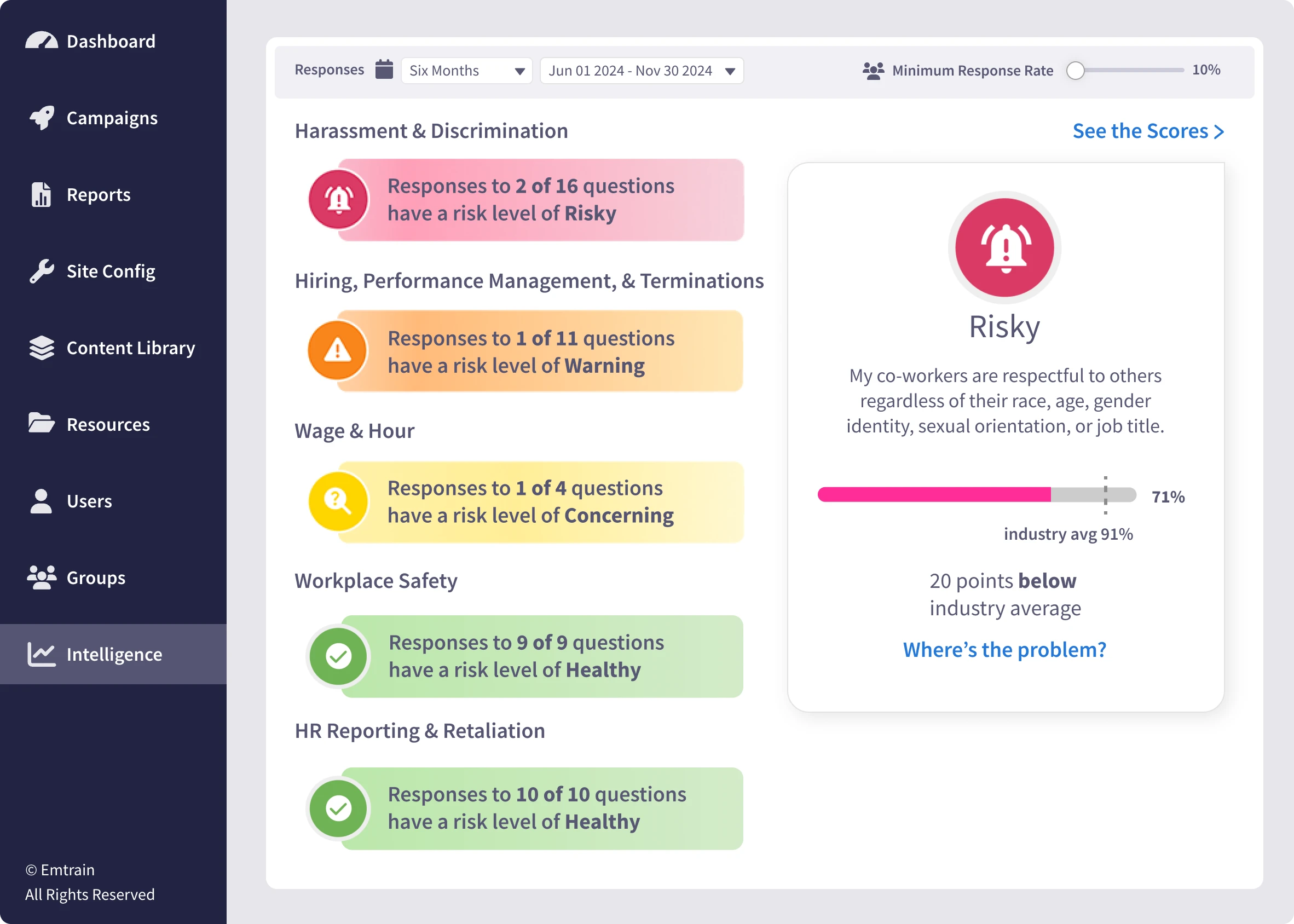Home » Concepts » Diversity, Equity, & Inclusion » Stereotype
A stereotype is an oversimplified and fixed idea or belief about a particular group of people. Stereotypes often lead to unfair assumptions and can negatively impact workplace dynamics by perpetuating biases and limiting opportunities for growth.
Emtrain’s harassment training course is engaging, interactive, and designed to spot and reduce EEO risk.

Stereotypes have existed for centuries, originating from societal norms and cultural influences that sought to categorize individuals into simplified roles. While these categorizations were historically used as coping mechanisms for understanding the world, they have evolved into harmful biases that affect workplaces and communities.
In the modern workplace, stereotypes can hinder collaboration, productivity, and employee morale. For example, stereotypes about age, gender, or ethnicity can lead to inequitable decision-making and exclusionary practices.
Research indicates that individuals from stereotyped groups often face increased challenges in the workplace, leading to higher stress and burnout levels. For instance, a study published in the Journal of Business and Psychology found that women and ethnic minorities frequently encounter negative meta-stereotypes, which can result in increased self-doubt and lower self-esteem, ultimately affecting their job performance and well-being.
Additionally, the American Psychological Association reports that 79% of employees have experienced work-related stress, with marginalized groups, including women and people of color, often facing higher levels of burnout due to systemic biases and additional pressures to prove their competence.
These findings underscore the importance of addressing workplace stereotypes and implementing supportive measures to promote mental health and equitable opportunities for all employees.
Companies that actively combat stereotypes see a 25% improvement in team innovation by fostering diverse and inclusive teams.
These examples highlight how stereotypes manifest in everyday workplace situations and why addressing them is critical for organizational success.
Unconscious Bias Training
This course empowers employees to recognize and overcome unconscious biases, helping to foster equity and respect in the workplace.
Title: Challenging Ageism: Beyond Stereotypes
Description: This video explores how age-based stereotypes can limit opportunities and provides actionable steps to foster an age-inclusive workplace.